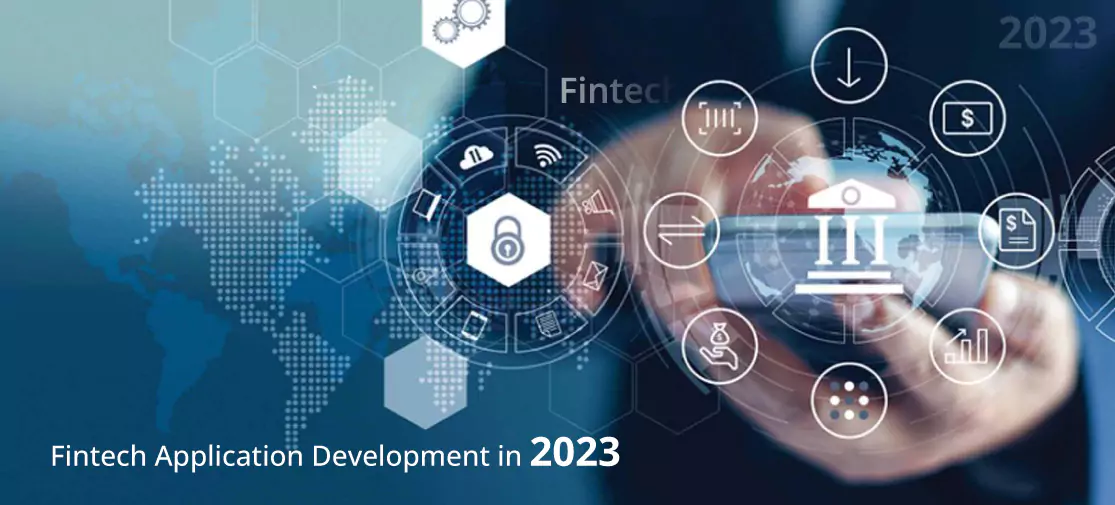What is fintech?
Fintech, short for "Financial Technology," refers to the use of innovative technologies to provide financial services and solutions in a modern and efficient manner. It is a rapidly growing sector that disrupts traditional financial services by leveraging technology to improve processes, increase accessibility, and enhance customer experiences.
Fintech encompasses a wide range of applications, platforms, and services that cater to various aspects of finance, including banking, payments, lending, investing, insurance, and more. It aims to bridge the gap between traditional financial institutions and the evolving needs and expectations of consumers in today's digital age.
Fintech market : a glimpse
The fintech market is a rapidly growing industry that is disrupting the traditional financial services industry. Fintech companies use technology to offer financial services that are more efficient, accessible, and user-friendly than traditional financial products and services.
The global fintech market is expected to reach $556.58 billion by 2030, growing at a CAGR of 19.50% from 2021 to 2030. The growth of the fintech market is being driven by a number of factors, including:
- The increasing adoption of mobile devices and the internet
- The growing demand for financial services by emerging markets
- The increasing need for financial innovation
The fintech market is segmented into a number of sub-sectors, including
- Digital payments: The digital payments sub-sector is the largest segment of the fintech market, and is expected to continue to grow in the coming years. This is due to the increasing adoption of mobile payments and the growing demand for contactless payments.
- Digital lending: The digital lending sub-sector is also growing rapidly, as more and more people are turning to online platforms to borrow money. This is due to the convenience and ease of use of online lending platforms.
- Digital investment: The digital investment sub-sector is another growing segment of the fintech market. This is due to the increasing demand for investment products that are more accessible and user-friendly than traditional investment products.
- Digital insurance: The digital insurance sub-sector is also growing, as more and more people are looking for online platforms to purchase insurance products. This is due to the convenience and affordability of online insurance platforms.
- Neobanking: The neobanking sub-sector is a new and growing segment of the fintech market. Neobanks are digital-only banks that offer a variety of financial services, such as checking accounts, savings accounts, and loans. Neobanks are gaining popularity due to their convenience and affordability.
The fintech market is a dynamic and rapidly growing industry. Fintech companies are constantly innovating and developing new ways to use technology to offer financial services. The future of the fintech market is bright, and it is likely to continue to grow in the coming years.
Here are some of the key trends that are shaping the fintech market
- The increasing adoption of artificial intelligence (AI) and machine learning (ML)
- The growth of open banking
- The rise of cryptocurrency and blockchain
- The increasing demand for personalized financial services
- The fintech market is a rapidly evolving industry, and it is important to stay up-to-date on the latest trends. By understanding the key trends that are shaping the fintech market, you can position yourself to take
- advantage of the opportunities that this growing industry has to offer.
Types of fintech apps
Fintech apps encompass a diverse range of financial technology solutions that cater to various aspects of financial services. These apps leverage technology to provide innovative and convenient ways for individuals and businesses to manage their finances. Here are some of the most common types of fintech apps:
Why pursue fintech app development
There are many reasons why you might want to pursue fintech app development. Here are a few of the most common reasons
- The fintech market is growing rapidly. The global fintech market is expected to reach $556.58 billion by 2030, growing at a CAGR of 19.50% from 2021 to 2030. This growth is being driven by a number of factors, including the increasing adoption of mobile devices and the internet, the growing demand for financial services by emerging markets, and the increasing need for financial innovation.
- There is a lot of opportunity for innovation in the fintech space. Fintech companies are constantly developing new ways to use technology to offer financial services. This means that there is a lot of opportunity for entrepreneurs who are looking to create innovative fintech apps.
- The fintech market is highly competitive. However, this also means that there is a lot of demand for high-quality fintech apps. If you can develop a successful fintech app, you could potentially reach a large audience and generate a lot of revenue.
- Fintech app development is a challenging but rewarding experience. It requires a deep understanding of financial services, technology, and user experience design. However, if you are successful, you will be able to create a product that has a real impact on people's lives.
- If you are interested in pursuing fintech app development, there are a few things you should keep in mind. First, you need to have a good understanding of the financial services industry. You should also be familiar with the latest technologies that are being used in the fintech space. Finally, you need to be able to design and develop user-friendly apps.
- If you have these skills and are passionate about fintech, then pursuing fintech app development could be a great career choice for you. The fintech market is growing rapidly, and there is a lot of opportunity for innovation. If you can develop a successful fintech app, you could potentially reach a large audience and generate a lot of revenue.
The must-have features of a fintech app
Here are some of the must-have features of a fintech app
- Secure user authentication: This is essential for any fintech app, as users will be entrusting their personal and financial information to the app. Secure authentication methods include two-factor authentication (2FA), biometric authentication, and encryption.
- Easy-to-use interface: Fintech apps are often used by people who are not familiar with financial terminology or jargon. Therefore, the app's interface should be easy to use and understand. The app should also be responsive and load quickly, even on older devices.
- Personalization: Fintech apps should be able to personalize the user experience based on the user's individual needs and preferences. This could include features such as customized dashboards, tailored financial advice, and targeted notifications.
- Security: Security is always a top concern for fintech apps. The app should use the latest security technologies to protect user data from unauthorized access. This includes features such as encryption, firewalls, and intrusion detection systems.
- Customer support: Fintech apps should offer excellent customer support. This could include features such as live chat, email support, and a knowledge base.
- Compliance: Fintech apps must comply with all applicable financial regulations. This includes features such as Know Your Customer (KYC) checks and anti-money laundering (AML) procedures.
These are just some of the must-have features of a fintech app. The specific features that are most important will vary depending on the type of fintech app and the target audience. However, all fintech apps should prioritize security, user experience, and compliance.
Here are some additional features that could be considered for a fintech app, depending on the specific needs of the target audience
- In-app payments: This feature allows users to make payments within the app, without having to leave the app. This can be a convenient way for users to pay for goods and services, or to transfer money between accounts.
- Investment tools: This feature allows users to invest in stocks, bonds, and other financial products. This can be a great way for users to grow their wealth and reach their financial goals.
- Personal finance management tools: This feature helps users track their spending, budget their money, and set financial goals. This can be a great way for users to get their finances in order and reach their financial goals.
- Financial education: This feature provides users with educational content about financial topics, such as budgeting, investing, and retirement planning. This can be a great way for users to learn about financial concepts and make informed financial decisions.
By incorporating these features, fintech apps can provide users with a valuable and convenient way to manage their finances.
Conclusion
In summary, the world of fintech app development is a realm of immense potential and opportunity. By recognizing the unique demands of this sector, focusing on user-centric design, and embracing innovation, developers can create apps that not only drive financial convenience but also contribute to the ongoing transformation of the financial services landscape. Fintech's future includes open banking, cryptocurrencies, and tailored services. This dynamic field offers vast opportunities for those ready to innovate and meet evolving financial needs.




